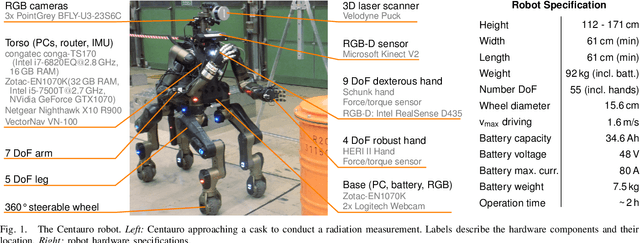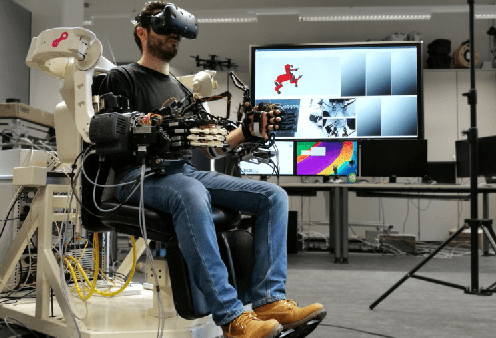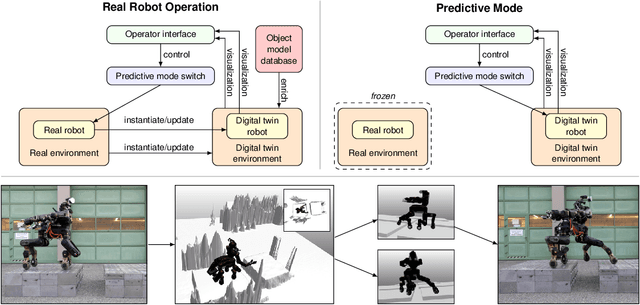Zeyu Ren
Simple is what you need for efficient and accurate medical image segmentation
Jun 16, 2025Abstract:While modern segmentation models often prioritize performance over practicality, we advocate a design philosophy prioritizing simplicity and efficiency, and attempted high performance segmentation model design. This paper presents SimpleUNet, a scalable ultra-lightweight medical image segmentation model with three key innovations: (1) A partial feature selection mechanism in skip connections for redundancy reduction while enhancing segmentation performance; (2) A fixed-width architecture that prevents exponential parameter growth across network stages; (3) An adaptive feature fusion module achieving enhanced representation with minimal computational overhead. With a record-breaking 16 KB parameter configuration, SimpleUNet outperforms LBUNet and other lightweight benchmarks across multiple public datasets. The 0.67 MB variant achieves superior efficiency (8.60 GFLOPs) and accuracy, attaining a mean DSC/IoU of 85.76%/75.60% on multi-center breast lesion datasets, surpassing both U-Net and TransUNet. Evaluations on skin lesion datasets (ISIC 2017/2018: mDice 84.86%/88.77%) and endoscopic polyp segmentation (KVASIR-SEG: 86.46%/76.48% mDice/mIoU) confirm consistent dominance over state-of-the-art models. This work demonstrates that extreme model compression need not compromise performance, providing new insights for efficient and accurate medical image segmentation. Codes can be found at https://github.com/Frankyu5666666/SimpleUNet.
Two-Stage Random Alternation Framework for Zero-Shot Pansharpening
May 10, 2025Abstract:In recent years, pansharpening has seen rapid advancements with deep learning methods, which have demonstrated impressive fusion quality. However, the challenge of acquiring real high-resolution images limits the practical applicability of these methods. To address this, we propose a two-stage random alternating framework (TRA-PAN) that effectively integrates strong supervision constraints from reduced-resolution images with the physical characteristics of full-resolution images. The first stage introduces a pre-training procedure, which includes Degradation-Aware Modeling (DAM) to capture spatial-spectral degradation mappings, alongside a warm-up procedure designed to reduce training time and mitigate the negative effects of reduced-resolution data. In the second stage, Random Alternation Optimization (RAO) is employed, where random alternating training leverages the strengths of both reduced- and full-resolution images, further optimizing the fusion model. By primarily relying on full-resolution images, our method enables zero-shot training with just a single image pair, obviating the need for large datasets. Experimental results demonstrate that TRA-PAN outperforms state-of-the-art (SOTA) methods in both quantitative metrics and visual quality in real-world scenarios, highlighting its strong practical applicability.
In-Hand Re-grasp Manipulation with Passive Dynamic Actions via Imitation Learning
Sep 27, 2023Abstract:Re-grasp manipulation leverages on ergonomic tools to assist humans in accomplishing diverse tasks. In certain scenarios, humans often employ external forces to effortlessly and precisely re-grasp tools like a hammer. Previous development on controllers for in-grasp sliding motion using passive dynamic actions (e.g.,gravity) relies on apprehension of finger-object contact information, and requires customized design for individual objects with varied geometry and weight distribution. It limits their adaptability to diverse objects. In this paper, we propose an end-to-end sliding motion controller based on imitation learning (IL) that necessitates minimal prior knowledge of object mechanics, relying solely on object position information. To expedite training convergence, we utilize a data glove to collect expert data trajectories and train the policy through Generative Adversarial Imitation Learning (GAIL). Simulation results demonstrate the controller's versatility in performing in-hand sliding tasks with objects of varying friction coefficients, geometric shapes, and masses. By migrating to a physical system using visual position estimation, the controller demonstrated an average success rate of 86%, surpassing the baseline algorithm's success rate of 35% of Behavior Cloning(BC) and 20% of Proximal Policy Optimization (PPO).
Exploring Turkish Speech Recognition via Hybrid CTC/Attention Architecture and Multi-feature Fusion Network
Mar 22, 2023



Abstract:In recent years, End-to-End speech recognition technology based on deep learning has developed rapidly. Due to the lack of Turkish speech data, the performance of Turkish speech recognition system is poor. Firstly, this paper studies a series of speech recognition tuning technologies. The results show that the performance of the model is the best when the data enhancement technology combining speed perturbation with noise addition is adopted and the beam search width is set to 16. Secondly, to maximize the use of effective feature information and improve the accuracy of feature extraction, this paper proposes a new feature extractor LSPC. LSPC and LiGRU network are combined to form a shared encoder structure, and model compression is realized. The results show that the performance of LSPC is better than MSPC and VGGnet when only using Fbank features, and the WER is improved by 1.01% and 2.53% respectively. Finally, based on the above two points, a new multi-feature fusion network is proposed as the main structure of the encoder. The results show that the WER of the proposed feature fusion network based on LSPC is improved by 0.82% and 1.94% again compared with the single feature (Fbank feature and Spectrogram feature) extraction using LSPC. Our model achieves performance comparable to that of advanced End-to-End models.
Flexible Disaster Response of Tomorrow -- Final Presentation and Evaluation of the CENTAURO System
Sep 19, 2019



Abstract:Mobile manipulation robots have high potential to support rescue forces in disaster-response missions. Despite the difficulties imposed by real-world scenarios, robots are promising to perform mission tasks from a safe distance. In the CENTAURO project, we developed a disaster-response system which consists of the highly flexible Centauro robot and suitable control interfaces including an immersive tele-presence suit and support-operator controls on different levels of autonomy. In this article, we give an overview of the final CENTAURO system. In particular, we explain several high-level design decisions and how those were derived from requirements and extensive experience of Kerntechnische Hilfsdienst GmbH, Karlsruhe, Germany (KHG). We focus on components which were recently integrated and report about a systematic evaluation which demonstrated system capabilities and revealed valuable insights.
 Add to Chrome
Add to Chrome Add to Firefox
Add to Firefox Add to Edge
Add to Edge